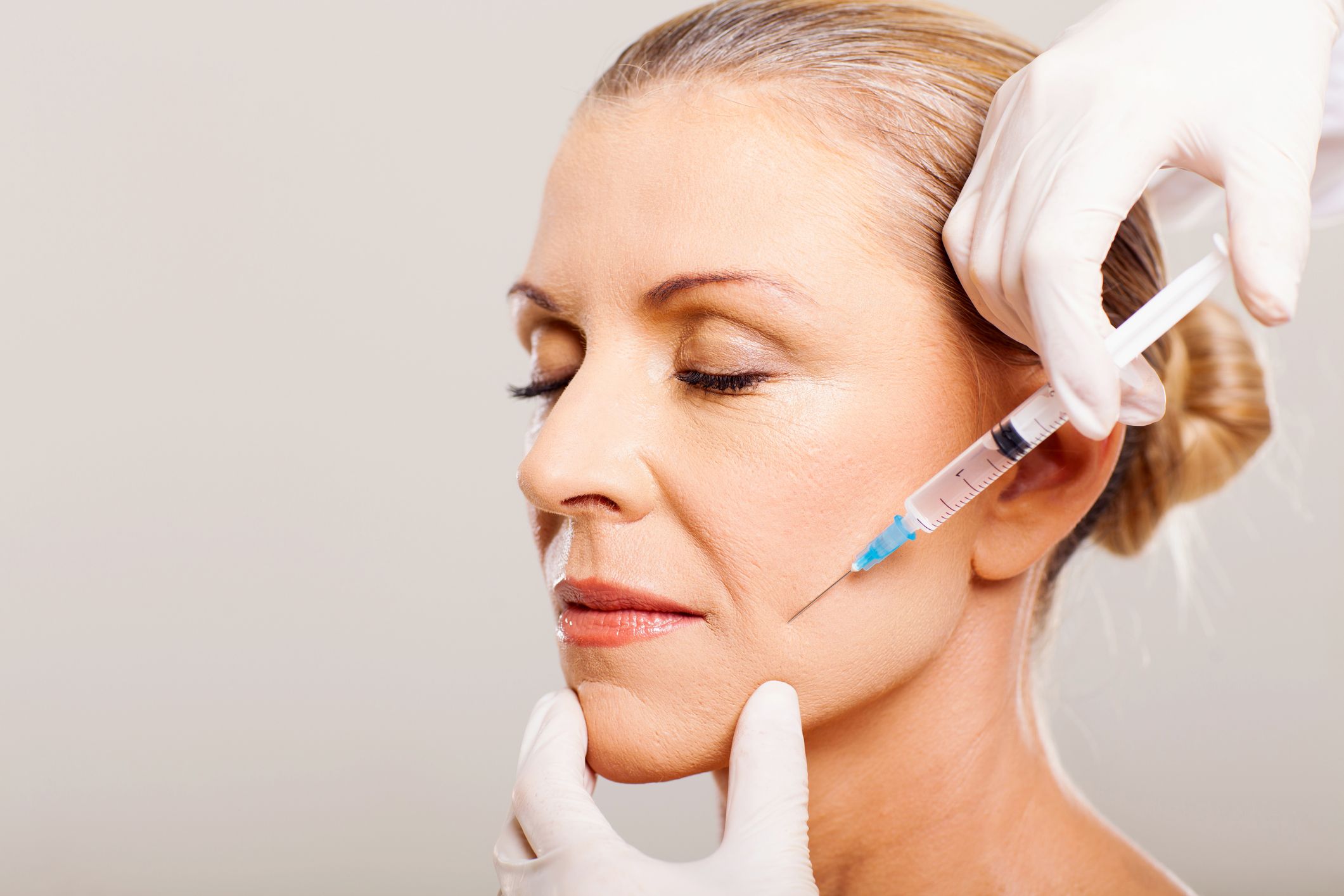Botox, also known as botulinum toxin, is an incredibly popular cosmetic treatment used to reduce the appearance of fine lines and wrinkles on the face. With its growing popularity, many questions arise about how it works and its potential side effects. One common question is: can Botox affect your vision?
How Botox Works
To understand if Botox impacts eyesight, it helps to first understand what Botox is and how it works.
Botox is made from purified botulinum toxin, which blocks signals from the nerves to the muscles. When injected into specific muscles, Botox temporarily paralyses them, causing those wrinkle-causing muscles to relax. Its effects are localised to where it is injected.
Some of the most common treatment areas include:
Book A Consultation With Dr Tarek Bayazid
Top-rated Plastic Surgeon For Botox in Dubai
- Forehead (horizontal forehead lines)
- Frown lines between eyebrows
- Crow’s feet around the eyes
- Bunny lines on the nose
Botox takes 2-14 days to take full effect, and results typically last 3-6 months.
Can Botox Affect Your Vision?
There has been concern over whether Botox can migrate or diffuse through tissue to other areas, including around the eyes. However, studies have shown that botox typically stays localised and compartmentalised to the injection site when administered correctly by an experienced provider.
According to researchers, “It is doctrinally assumed that BTX-A does not diffuse into adjacent tissue planes.” So there is little risk of botox accidentally impairing vision when injected properly in FDA-approved treatment areas for cosmetic use like glabellar frown lines and crow’s feet.
Risk Factors That Can Cause Vision Problems
While botox itself staying localised means the risk is low, there are some other factors that determine whether botox injections around the eyes could pose a vision risk:
Inexperienced Provider
With advanced specialised training in proper injection techniques and facial anatomy, risks are minimal. However, in unqualified hands, complications can occur if the wrong muscles around the eyes are injected.
This can cause temporary problems like ptosis (droopy eyelids), dry eyes, double vision, or difficulty moving the eyes for a short period. Choosing a board-certified, experienced oculofacial plastic surgeon who specialises in botox injections around the sensitive eye area is important.
Pre-Existing Conditions
Certain pre-existing conditions like myasthenia gravis or Eaton-Lambert syndrome can increase the risk for vision problems since Botox could exacerbate muscle weakness issues. Proper patient screening by a qualified injector reduces this risk.
Incorrect Injection Placement
Rarely, botox could diffuse into the lower eyelid area if incorrectly placed too close to the eye during treatment of crow’s feet. This could cause temporary eyelid drooping or vision impairment. Again, an expert physician with advanced anatomy training minimises any risk.
Incorrect Botox Dilution or Dosage
Using an incorrect dilution or injecting too high a dose also increases the risk for migration and vision-related side effects. A properly trained physician always follows precise dilution protocols and uses minimal doses to achieve desired aesthetic outcomes.
Indications of Vision-Related Side Effects
If you do experience any vision changes after botox, contact your injector immediately. Symptoms indicating potential vision impairment-related side effects include:
- Drooping eyelids
- Blurry vision
- Double vision
- Dry eyes
- Difficulty moving the eyes or squinting
These symptoms are typically temporary, lasting 2-6 weeks as the botox wears off. There are also medical treatments like eye drops, massage, antibiotics or steroid injections that can help resolve certain problems if they arise.
How to Prevent Vision Problems with Botox
The key is being proactive. Before considering any cosmetic botox injections, it is vital to:
- Select only a licensed, board-certified plastic surgeon or oculofacial specialist with extensive experience and advanced training in treating the delicate eye area. Carefully review their qualifications, speciality expertise, before and after photos, and patient reviews.
- Follow all pre and post-treatment instructions from your doctor to prevent complications. This includes the use of any prescribed eye drops or ointments, head elevation when resting, and avoiding rubbing the treated area.
- Ask questions and educate yourself during consultations about the botox procedure, potential risks, and the doctor’s safety protocol. Exchange contact information so you can easily reach your doctor with any concerns after your treatment.
- Avoid excessive alcohol consumption, which can increase migration risk.
- Stay up to date on follow-up visits. Based on your individual health, anatomy and dosage, you may need touch-up injections within 2-3 months once the Botox starts to fade.
Taking these proactive steps will help ensure you safely achieve your desired aesthetic goals without vision-related botox side effects.
Understanding the Possible Effects of Botox Around the Eyes
| Issue | Effect on Vision | Prevention Tips |
| Ptosis (drooping eyelid) | Can block upper vision and cause difficulty opening the eye | Use an experienced injector, proper injection sites/depths |
| Difficulty Closing Eye | May impact sleep, cause dryness | Apply lubricating eye drops, tape the eye shut overnight |
| Double Vision | Impairs the ability to focus and judge distance | The rare side effect typically resolves in weeks |
| Bruising | Usually, it doesn’t directly affect vision | Avoid blood thinners before treatment, use cold compresses |
| Muscle Weakness | Potential loss of ability to focus on nearby objects | Use the lowest effective dose around the eyes |
| Retrobulbar Haemorrhage | Buildup of blood behind eye, emergent issue | Extremely rare to get immediate medical care if severe pain and vision issues occur |
With an experienced provider using proper technique and dosage, vision issues from periocular Botox are very uncommon. Speak to your provider about any eye-related concerns. Most side effects fully resolve.
Can Botox for Migraines Cause Vision Problems?
Botox is also used to effectively prevent debilitating migraine headaches. In fact, it is FDA-approved for chronic migraines.
Some patients do report visual disturbances like blurred vision when using Botox for migraines. However, research indicates symptoms resolve on their own within 1-2 weeks without permanent impairment.
Again, proper injection techniques in migraine botox treatment can help prevent this temporary side effect. Experts also hypothesise that blurred vision could result from changes in brain chemistry as migraines improve, not necessarily botox diffusion. Either way, vision changes seem short-term with little long-term risk.
In conclusion, addressing the concern ‘Can Botox Affect Your Vision’ reveals that while rare, there are potential visual side effects associated with Botox. It’s imperative for patients to consult with qualified professionals and understand all aspects of the procedure to ensure safety and address any concerns effectively.
When injected correctly by a qualified, highly trained physician in appropriate treatment areas around the eyes, botox poses very little risk of negatively impacting vision or eye health.
Be sure to select a doctor like Dr. Tarek Bayazid, one of Dubai’s most prominent facial plastic surgeons. With his advanced techniques, artistic eye for precision around delicate areas like the eyes, and dedication to patient education and safety – you can confidently enhance your appearance with Botox.
Minimise risks and achieve natural-looking, visually rejuvenating results under his expert care. Reclaim your youthful gaze to book a consultation with Dr Tarek Bayazid today.








Related Posts